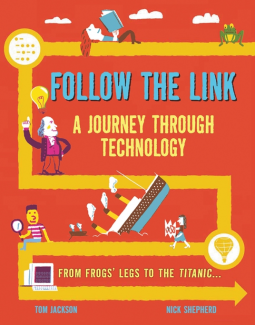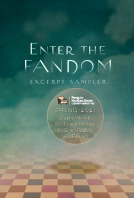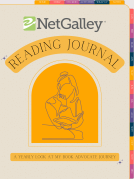
Follow the Link: A Journey Through Technology
From Frogs' Legs to the Titanic
by Tom Jackson
This title was previously available on NetGalley and is now archived.
Send NetGalley books directly to your Kindle or Kindle app
1
To read on a Kindle or Kindle app, please add kindle@netgalley.com as an approved email address to receive files in your Amazon account. Click here for step-by-step instructions.
2
Also find your Kindle email address within your Amazon account, and enter it here.
Pub Date Jun 06 2017 | Archive Date Jan 16 2018
Quarto Publishing Group - QEB | words & pictures
Talking about this book? Use #FollowTheLinkAJourneyThroughTechnology #NetGalley. More hashtag tips!
Description
Available Editions
| EDITION | Other Format |
| ISBN | 9781609929572 |
| PRICE | $14.95 (USD) |
Average rating from 6 members
Featured Reviews
Inviting, Informative, and Cheerfully Accessible
This kid science book has a unique structure that works really well. At first I thought the references to links and networks meant that this was going to be one of those "Connections" sorts of books where everything is surprisingly connected to everything else in unexpected ways. There's some of that here, but that's not the organizing principle.
Rather, think of a linear path game like Candyland. We start on page one and we follow a clear path from page to page right on to the end of the book. The path curves and turns, (look at the cover), but it is a single one way path. Along the way, though, little paths branch off and lead to digressions, factoids, interesting bits of biography, the occasional joke, and other marginalia and footnotes. So, you can read the book through by staying on the path or you can read it through while turning off at each side trail and coming back again, or read it through and then go back and wander amongst the digressions. In a Zen mood, I followed the "middle way".
So, knowing the organization is rather cool and inviting, what about content? Well, I was pleased that the author steered a middle course through the basics while still including some fairly sophisticated side trips. While the book title suggests a tour through all of "technology" we focus almost exclusively on electricity.
We start with warring gods in the sky generating lightning, (and Thor creating his namesake "thunder"). We follow ancient theories about what lightning, (and all other physical phenomena), might be. From amber to static electricity to Victorian parlor tricks to serious experiments with electric currents, Leyden jars, batteries, galvanism, and then electromagnetism, the author crisply sketches out the major scientific insights that led to an understanding of what electricity is. We meet Edison, Tesla, Westinghouse, and learn about direct and alternating current. Then we are on to waves, light, radio, TV and digital communication. This is paced very well and the path lays out a coherent story that unfolds naturally and without gaps. By the end the reader will be familiar with all of the most significant popularly know scientists in the field and will have a passing knowledge of the most significant experiments, inventions, and insights.
That's quite an achievement. The narrative is congenial and has just enough gee-whiz energy to hold an ambitious and committed youngster's attention. There are a few humorous observations but none of that "Dummies" childishness that seems to talk down to the reader. I'm thinking an older elementary school kid could get a lot out of this, while a middle grader should be able to handle the whole thing, although I can't claim any special expertise on that score. It certainly does feel, though, that this book would be attractive to an early reader, not at all off-putting, and quite likely to fire the imagination. The interesting page by page pathway seems to enhance that accessibility.
So, this was an interesting find that offered a lot more in the way of content and appeal than I expected, and ended up a very nice find.
(Please note that I received a free advance will-self-destruct-in-x-days Adobe Digital copy of this book without a review requirement, or any influence regarding review content should I choose to post a review. Apart from that I have no connection at all to either the author or the publisher of this book.)
Follow the Link is a fun book showing the historical connections in science and technology from prehistory to the present (and a glimpse of potential future innovations) aimed at young to middle readers (aged 7-12). The book starts with a background explanation of electricity and arrows move the reader along paths to explain those innovations and progress from early (non-scientific) reasons for natural phenomena to modern day concepts such as radio, electromagnets and smartphones.
Along the way, sidebar arrows and pictures describe all sorts of fun trivia (Donner & Blitzen's names translate to Thunder and Lightning, for example).
The text by Tom Jackson is well and clearly written, if somewhat frenetic. There is so much information that it seems scattered and random at times. Nick Shepherd's art is very simple, appealing, and colorful and the arrows and paths give the potentially overwhelming text a little more structure and flow.
Follow the Link is 80 pages, hardbound, and includes a useful timeline, glossary, and index. Published by Quarto - QEB Publishing.
It would definitely appeal to science interested youngsters and fun-leaning adults.
Four stars. Interesting material, well presented in a fun manner.
 Librarian 299542
Librarian 299542
Cute book and curious format as the titular link serves as a timeline of sorts where one scientific discovery or breakthrough leads to another, which leads to another, and so forth.
 Ruth F, Educator
Ruth F, Educator
What an innovative way to look at a subject. Follow the Link: A Journey Though Technology show brief information about a wealth of different items and links them together in a plethora of different manners. As a way to introduce STEM subjects to a more reluctant reader, I think this would be ideal and the curiosity raising presentation a real bonus to child engagement.
 Librarian 269868
Librarian 269868
Bright and engaging journey through technology. Linear or interest-based. Suitable for middle/upper primary through to adults - genuinely something interesting for everyone.
 Educator 317339
Educator 317339
This book is a combination of science and history that will be interesting to many ages (even some adults). As it traces the history of electricity (and what has grown from that discovery), it includes many wonderful extras which relate to the discussion at the moment. For instance, bits of information about silkworms, making glass, and the malleability of gold. This trek through history is a fun approach to science. My students will enjoy this book (I did, too) and I highly recommend it.
Readers who liked this book also liked:
We Are Bookish
Mystery & Thrillers, OwnVoices, Teens & YA
Silvia Moreno-Garcia
Historical Fiction, Literary Fiction, Sci Fi & Fantasy
Rachel Joyce
Historical Fiction, Literary Fiction, Women's Fiction
Brian Soonho Yoon
Children's Nonfiction, Crafts & Hobbies


















